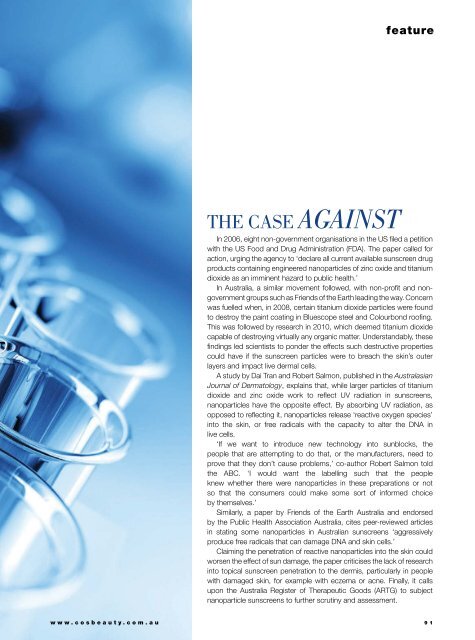Cosmetic Surgery and Beauty Magazine #66
Cosmetic Surgery and Beauty is the must-read for anyone considering a cosmetic procedure or treatment. With hundreds of before and after photo, and cosmetic and plastic surgery experts featured, tis educational resource will allow you to confidently decide the best course of action. This issue includes features on: Breast reshaping Six ways to get younger looking skin Surgical vs non-surgical fat reduction Body soothing products Energy boosters DIY perfect makeup As well as regular features on breast augmentation, facelifting, rhinoplasty and liposculpture/liposuction.
Cosmetic Surgery and Beauty is the must-read for anyone considering a cosmetic procedure or treatment. With hundreds of before and after photo, and cosmetic and plastic surgery experts featured, tis educational resource will allow you to confidently decide the best course of action.
This issue includes features on:
Breast reshaping
Six ways to get younger looking skin
Surgical vs non-surgical fat reduction
Body soothing products
Energy boosters
DIY perfect makeup
As well as regular features on breast augmentation, facelifting, rhinoplasty and liposculpture/liposuction.
Create successful ePaper yourself
Turn your PDF publications into a flip-book with our unique Google optimized e-Paper software.
feature<br />
The case against<br />
In 2006, eight non-government organisations in the US filed a petition<br />
with the US Food <strong>and</strong> Drug Administration (FDA). The paper called for<br />
action, urging the agency to ‘declare all current available sunscreen drug<br />
products containing engineered nanoparticles of zinc oxide <strong>and</strong> titanium<br />
dioxide as an imminent hazard to public health.’<br />
In Australia, a similar movement followed, with non-profit <strong>and</strong> nongovernment<br />
groups such as Friends of the Earth leading the way. Concern<br />
was fuelled when, in 2008, certain titanium dioxide particles were found<br />
to destroy the paint coating in Bluescope steel <strong>and</strong> Colourbond roofing.<br />
This was followed by research in 2010, which deemed titanium dioxide<br />
capable of destroying virtually any organic matter. Underst<strong>and</strong>ably, these<br />
findings led scientists to ponder the effects such destructive properties<br />
could have if the sunscreen particles were to breach the skin’s outer<br />
layers <strong>and</strong> impact live dermal cells.<br />
A study by Dai Tran <strong>and</strong> Robert Salmon, published in the Australasian<br />
Journal of Dermatology, explains that, while larger particles of titanium<br />
dioxide <strong>and</strong> zinc oxide work to reflect UV radiation in sunscreens,<br />
nanoparticles have the opposite effect. By absorbing UV radiation, as<br />
opposed to reflecting it, nanoparticles release ‘reactive oxygen species’<br />
into the skin, or free radicals with the capacity to alter the DNA in<br />
live cells.<br />
‘If we want to introduce new technology into sunblocks, the<br />
people that are attempting to do that, or the manufacturers, need to<br />
prove that they don’t cause problems,’ co-author Robert Salmon told<br />
the ABC. ‘I would want the labelling such that the people<br />
knew whether there were nanoparticles in these preparations or not<br />
so that the consumers could make some sort of informed choice<br />
by themselves.’<br />
Similarly, a paper by Friends of the Earth Australia <strong>and</strong> endorsed<br />
by the Public Health Association Australia, cites peer-reviewed articles<br />
in stating some nanoparticles in Australian sunscreens ‘aggressively<br />
produce free radicals that can damage DNA <strong>and</strong> skin cells.’<br />
Claiming the penetration of reactive nanoparticles into the skin could<br />
worsen the effect of sun damage, the paper criticises the lack of research<br />
into topical sunscreen penetration to the dermis, particularly in people<br />
with damaged skin, for example with eczema or acne. Finally, it calls<br />
upon the Australia Register of Therapeutic Goods (ARTG) to subject<br />
nanoparticle sunscreens to further scrutiny <strong>and</strong> assessment.<br />
www.cosbeauty.com.au 91

















